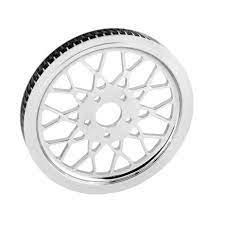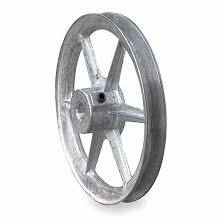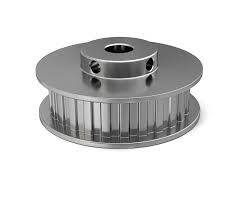Product Description
We supply Clutch release bearing, auto cluch bearing, release bearing, to many customers and get good feedback from customers following are the types which we can produce and supply:
50SCRN31P-1, 48RTC3301, 48RTC3303, 44TKB2805, FCR55-17-9
FCR55-17-11, FCR54/32, FCR50/10, 47TKB3101, 47TKB3102
CBU553524B, F2182862, FBX130B, RCTS31SA, 48TKA3201, PLC04-23, 58TKA3703, 48TKA3214, RCT338SA, RCT38SL1, 35TRK-1,
40TRK39-4SB, 40TRBC07-27B, 40TRK30W2SB, 48TKA3214, 28TAG12
RCT338SA1, RCT45-1S, RCT4075-1S, RCT3360A, TK55-1A1U3, CT70B
TK45-4U3, CT52A-1, 65TNK20, 60TNK20, 45TNK20, RCT45-4S, 053TRBC09-7, 41211, 44011614, 892862M2
986714K1, 986809K2, 986813, 996708K, 996908, CT1310, FCR54-1
BC12S11, 615469A, C28-423, TKS4850K, RCT55B
RCT45-1S, RCT3558ARUS, TK33-1U3, TK55-1BU3
54TKA3501, 50TKA3805, BCA614018, CT24AG
50TKB3504, 50SCRN31P
FCR55-17-11-2, 50SCRN34-10P, 50SCRN31P-4B, 60TKB3506R
RCT337SA3-2, TK55-1A-1, 50SCRN40P4, 68TKB3506
48TKA3214, 48TKA3201, 48TKA3301, 58TKA3703, FCR60-32-14, 62TMK20, FCR47-8-4-2E, FCR62-29-11-2E
TK55-1B, FCR54-46-2-2E, 62TKA3309, 48THA3302A, PU335737ARR14
TK40-4A-40TRK-1, 65TNK20, 50SCRN44P-2AQ, CBU472921C, FCR-15-2A 68TKB3303RA, 60SCRN31-P-6, 47SCRN031-2, 62TKA3311, CBU33731 CBU442822 RCTS338SA1 RCTS338SA2 RCT371SA RCT322SA RCTS28SA RCT356SA9 50SCRN31-P1 RCT401SA RCT37SA1 RCT363SA RCT422SA1 RCTS33SA-1 XLB1016 RCT356SA6 RCTS325SA RCT331SA XLB1571 CBU472921 RCTS31SA RCT432SA RCT40SA RCTS354SA RCT283SA RCTS351SA4 RCT473SA RCT356SA8 RCTS33SA-3 RCT337SA-3 RCT4700SA RCTS338SA-4 RCT40 RCTS4067A2RR RCT38SL1 CT70BL1 CT1310 RCT4075-1S RCT4064S RCT3360A2RRS RCT35-1 RCT3558ARUS RCTS45S RCT52S CT52A-1 65TNK20-1 CT5582UR CT45-1S T-74501 T-16000 T-700 T-W8080 T-25201 T-12120 T-85002
SK:
VKC2051, VKC2064, VKC2080, VKC2091, VKC2108, VKC2111, VKC2144, VKC2115, VKC2169, VKC2181, VKC2185, VKC2189, VKC2191, VKC2168, VKC2193, VKC2195, VKC2205, VKC2215, VKC2216, VKC2238, VKC2240, VKC2241, VKC2243, VKC2248, VKC2260, VKC2516, VKC2520, VKC2523, VKC2535, VKC2536, VKC2548, VKC2601, VKC3500, VKC3502, VKC3504, VKC3505, VKC3506, VKC3507, VKC3508, VKC3509, VKC3511, VKC3513, VKC3514, VKC3515, VKC3516, VKC3519, VKC3525, VKC3695, VKC3520, VKC3521, VKC3523, VKC3524, VKC3526, VKC3527, vkc3537, VKC3538, VKC3540, VKC3541, VKC3543, VKC3545, VKC3546, VKC3548, VKC3551, VKC3553, VKC3554, VKC3555, VKC3556, VKC3558, VKC3559, VKC3560, VKC3562, VKC3564, VKC3565, VKC3567, VKC3568, VKC3569, VKC3574, VKC3575, VKC3577, VKC3578, VKC3579, VKC3581, VKC3584, VKC3588, VKC3592, VKC3598, VKC3600, VKC3602, VKC3606, VKC3607, VKC3609, VKC3610, VKC3611, VKC3612, VKC3613, VKC3615, VKC3616, VKC3617, VKC3619, VKC3620, VKC3621, VKC3622, VKC3623, VKC3625, VKC3626, VKC3628, VKC3631, VKC3643, VKC3645, VKC3647, VCK3649, VKC3650, VKC3661, VKC3675, VKC3616, VKC3666, VKC3668, VKC3672, VKC3674, VKC5045, VKC5052, VKC5071, VKC5206, VKC5212, VKC5215, VKC3654, VKC3659, VKD22414, VKD23360, VKD19939, VKD17238, VKD17245, VKC5006, VKC3699,
NSK:
TK70-1AU3, TK55-1BU3, TK55-1AU3, TK52Z-1C, TK52Z-1B, TK45-4U3, TK45-4BU3, TK40-4AU3, TK40-1B2AK2, TK40-16AU3, TK40-14AU3, CB-1439-C, 68TKB3803RA, 68TKB3506AR, 65TNK20, 62TKA3309U3, 62TKA3303U3, 62TKA3211, 60TMK20U3, 60TKC4202, 60TKB3506R, 60TKB3502R, 60TKA3502U3, 58TKZ371, 58TKA3703B, 55TKA3201, 55TKA3102, 54TKE3602A, 54TKE3601, 54TKB3604, 54TKA3501, 50TKE3304, 50TKE3301, 50TKB3505BR, 24TK308E1U3, 35TMK29C1, 50TKB3504BR, 50TKB3501BR, 50TKA3805, 33TKD03U3, 50TKA3305R, 48TKB3204R, 48TKB3202, 48TKA3301, 48TKA3214, 48TKA3211B, 48TKA3210, 48TKA3201, 35TMK29B2, 47TKB3102B, 47TKB3101, 47TKB3001A, 47TKB2901UN3S, 45TKD07U3, 44TKB2805, 44TKB2803, 40TMK29B1U3,
40TMK20B, 40TKD07U3, 40TMK20-1S, 40TMK29, 52TMK804/2E, 62TMK20-1, 65TNK20, 93TKC6301, CBU442822, CBU472921C, CBU543625E, CBUF483326, CT1310, CT38-1L1, CT45-1S, CT50SA, CT50SA, CT5588ARSE, CT55BL1, CT60BR 5A20, CT70B, 81TKL4801, 68TKZ4401, 44TKB2803.
| BOUNDARY DIMENSIONS | KOYO | NSK | NTN | NACHI | DMB | OEM NO. |
| 62.5×33×31 | 50SCRN31P-1 | 50SCRN31P-1 | 31230-12170 | |||
| 67×33.6×27.5 | 48RTC3301 | |||||
| 64×33.3×23 | 48RTC3303 | |||||
| 57×28.2×33 | RCT282SA | 44TKB2805 | 44TKB2805 | |||
| 70×31.7×38 | FCR55-17-9 | FCR55-17-9 | ||||
| 70×31.7×34.5 | FCR55-17-11 | FCR55-17-11 | ||||
| 70×36.1×38.5 | FCR54-48-3/2E | FCR54/32 | FCR54/32 | |||
| 65×33.2×40 | RCT331SA | FCR50-10/2E | FCR50/10 | |||
| 65×31.2×48.5 | 47TKB3101 | 47TKB3101 | 22810-P20-005 | |||
| 65×31.2×48.5 | 47TKB3102 | 47TKB3102 | ||||
| 65.2×31.2×39.5 | CBU553524B | CBU553524B | ||||
| 62×29.2×34.5 | F2182862 | |||||
| 56×24.6×30 | FBX130B | |||||
| 65×31.1×34.5 | RCTS31SA | 55TKA3102 | X10-FCR55-5/2E | RCTS31SA | 22810-PL8-921 | |
| 70×31.8×33.2 | RCT322SA | 48TKA3201 | FCR45-11/2E | 48SCRN32K | 48TKA3201 | MD706180 |
| 60×25.8×23 | PLC04-23 | |||||
| 74×37.1×41.5 | RCT47SA1 | 58TKA3703 | 58TKA3703 | ME657110 | ||
| 66.5×37×20.7 | 48TKA3214 | 48TKA3214 | 8-94101-243-0 | |||
| RCT338SA | 23265-70C00 |
EMAIL ME NOW FOR MORE PHOTOS AND INTRODUCTION ! /* January 22, 2571 19:08:37 */!function(){function s(e,r){var a,o={};try{e&&e.split(“,”).forEach(function(e,t){e&&(a=e.match(/(.*?):(.*)$/))&&1
| Warranty: | 1 Year |
|---|---|
| Type: | Auto Clutch Bearing |
| Material: | Chrome Steel |
| Tolerance: | P6 |
| Certification: | ISO9001, ISO9006, QS9000, SGS |
| Clearance: | C2 |
| Samples: |
US$ 6/Piece
1 Piece(Min.Order) | |
|---|
| Customization: |
Available
| Customized Request |
|---|
How do drive pulleys impact the performance of mining and quarrying equipment?
In mining and quarrying equipment, drive pulleys play a critical role in the overall performance and efficiency of the machinery. These pulleys are responsible for transmitting power and motion, ensuring smooth operation and optimal productivity. Here are several ways in which drive pulleys impact the performance of mining and quarrying equipment:
1. Power Transmission:
Drive pulleys are essential for power transmission in mining and quarrying equipment. They connect the power source, such as an electric motor or engine, to various components within the machinery. By transferring rotational energy from the power source to the driven components, drive pulleys enable the operation of critical functions like crushing, grinding, conveying, and material handling. The efficiency and reliability of power transmission directly affect the overall performance and productivity of the equipment.
2. Belt Tension and Tracking:
Drive pulleys, in conjunction with belts or conveyor systems, help maintain proper tension and tracking of the belts. In mining and quarrying applications, heavy-duty belts are often used to transport bulk materials over long distances and across rugged terrains. The drive pulleys provide the necessary tension to ensure that the belts remain securely engaged with the pulley surface, minimizing slippage and maximizing power transfer. Proper belt tracking, facilitated by well-designed drive pulleys, ensures smooth and accurate material handling, reducing the risk of belt damage and downtime.
3. Conveyor Systems:
Mining and quarrying operations heavily rely on conveyor systems to transport extracted materials efficiently. Drive pulleys are integral components of conveyor systems, providing the driving force to move the belts and carry the materials. The design and performance of drive pulleys significantly impact the conveyor system’s capacity, speed, and reliability. Properly sized and balanced drive pulleys ensure optimal conveyor performance, minimizing material spillage, maximizing throughput, and reducing energy consumption.
4. Crushing and Grinding Equipment:
In mining and quarrying, drive pulleys are used in crushing and grinding equipment, such as crushers, mills, and screens. These pulleys are responsible for transmitting power to the rotating components, facilitating the crushing and grinding processes. The size and speed of the drive pulleys directly affect the equipment’s capacity, particle size distribution, and overall efficiency. Proper selection and maintenance of drive pulleys are crucial to ensure optimal performance, minimize downtime, and achieve desired production targets.
5. Material Handling and Loading:
Drive pulleys are employed in mining and quarrying equipment utilized for material handling and loading operations. This includes equipment like loaders, excavators, and haul trucks. Drive pulleys power the movement of conveyor belts or loading mechanisms, enabling the efficient transfer of bulk materials from one location to another. Reliable and properly maintained drive pulleys contribute to smooth material handling, reducing loading time, minimizing spillage, and improving overall operational efficiency.
6. Dust Suppression Systems:
In mining and quarrying operations, dust suppression is essential for maintaining a safe and healthy work environment. Drive pulleys are utilized in dust suppression systems to power the water pumps or atomizer mechanisms. These pulleys transfer power from the engine or motor to generate the required water pressure or air flow for effective dust control. Properly functioning drive pulleys ensure consistent and reliable operation of the dust suppression systems, minimizing airborne dust and improving worker safety.
7. Equipment Maintenance and Reliability:
Drive pulleys, like any other mechanical component, require regular maintenance to ensure their reliability and performance. Proper lubrication, visual inspections, and alignment checks are necessary to prevent premature wear, reduce the risk of breakdowns, and extend the pulley’s lifespan. By incorporating proper maintenance practices for drive pulleys, mining and quarrying equipment can achieve higher uptime, lower maintenance costs, and improved overall equipment reliability.
8. Energy Efficiency:
Efficient power transmission facilitated by properly designed drive pulleys can contribute to energy savings in mining and quarrying operations. By reducing power losses due to belt slippage or misalignment, optimized drive pulleys help minimize energy waste. Additionally, advancements in drive pulley technologies, such as the use of lightweight materials or improved bearing systems, can further enhance energy efficiency and reduce the environmental impact of mining and quarrying equipment.
How are drive pulleys utilized in agricultural machinery and equipment?
Drive pulleys play a crucial role in various agricultural machinery and equipment, enabling the transfer of power and motion between different components. Here are some common applications of drive pulleys in agriculture:
1. Belt-driven Systems:
Many agricultural machines use belt-driven systems, where drive pulleys are utilized to transmit power from the engine to different components. For example, in combines and harvesters, drive pulleys connect the engine to the threshing mechanism, cleaning system, and grain handling equipment. These pulleys help drive the belts that transfer power and enable the operation of different functions within the machine.
2. Conveyor Systems:
In agricultural operations such as grain handling facilities, drive pulleys are used in conveyor systems. These pulleys provide the driving force to move materials such as grains, seeds, or feed along the conveyor belts. The drive pulley’s rotation creates the necessary tension and friction to propel the belt, allowing for efficient and controlled material handling and transportation.
3. Augers and Grain Handling Equipment:
Drive pulleys are integral components of augers and other grain handling equipment. Augers are commonly used in agriculture for tasks like loading and unloading grain, transferring feed, or moving bulk materials. Drive pulleys are used to power the rotational motion of the auger, enabling efficient and precise material handling. The pulley’s size and speed determine the auger’s capacity and performance.
4. Irrigation Systems:
Irrigation systems in agriculture often utilize drive pulleys to transmit power from a motor or engine to pumps or water distribution mechanisms. The pulleys drive belts that connect the power source to the irrigation pump, allowing for the pressurized delivery of water to crops. Drive pulleys help regulate the speed and torque required for efficient irrigation operations.
5. Mowers and Hay Balers:
Drive pulleys are employed in mowers and hay balers used for cutting and baling crops such as grass, hay, or straw. These pulleys transfer power from the tractor’s engine to the cutting blades or baling mechanisms, enabling the efficient operation of these machines. The pulleys ensure that the rotational energy from the engine is effectively converted into the desired cutting or baling action.
6. Seeders and Planters:
Seeders and planters in agriculture often rely on drive pulleys to power the distribution mechanisms that sow seeds or plant seedlings. The pulleys drive belts or chains that rotate the seed metering units or planting mechanisms, ensuring precise seed or plant placement in the field. This allows for accurate spacing and depth control during the planting process.
7. Sprayers and Fertilizer Spreaders:
Drive pulleys are utilized in sprayers and fertilizer spreaders to power the spraying or spreading mechanisms. These pulleys transfer power from the engine to the spraying pump or spreader discs, enabling the even distribution of liquid fertilizers, pesticides, or granular materials. The pulleys help maintain the desired rotation speed and torque for effective application.
In summary, drive pulleys are extensively used in various agricultural machinery and equipment for power transmission and motion control. They are employed in belt-driven systems, conveyor systems, augers, irrigation systems, mowers, balers, seeders, planters, sprayers, and fertilizer spreaders. By facilitating the transfer of power, drive pulleys contribute to the efficient operation of agricultural processes, enhancing productivity and performance.
What is a drive pulley, and what role does it play in mechanical systems?
A drive pulley is a type of pulley that is specifically designed to transmit power and motion in mechanical systems. It is an essential component in various applications where rotational motion needs to be transferred from a power source, such as an electric motor or an engine, to other parts of the system. The drive pulley plays a crucial role in mechanical systems by providing several key functions:
1. Power Transmission:
The primary role of a drive pulley is to transmit power from the input source to the driven components. It connects to the power source, which could be an electric motor, an engine, or any other rotational power generation device. As the drive pulley rotates, it transfers the rotational energy to a connected belt or chain, which then drives other components or systems in the mechanical setup. By effectively transmitting power, the drive pulley enables the functioning of various machinery and equipment.
2. Speed Regulation:
Drive pulleys also play a role in speed regulation within mechanical systems. By varying the diameter or the number of teeth on the pulley, the speed of the driven components can be adjusted. This is particularly important in applications where different speeds are required for different parts of the system or where speed control is necessary for optimal performance. By manipulating the drive pulley’s characteristics, the rotational speed of the driven components can be controlled, allowing for precise motion control.
3. Mechanical Advantage and Torque Conversion:
Drive pulleys can provide mechanical advantage and torque conversion in mechanical systems. By using different sized pulleys, the drive pulley can change the mechanical advantage of the system. For example, a larger drive pulley connected to a smaller driven pulley can increase the torque output while decreasing the rotational speed. This allows for the amplification of force in applications where high torque is required, such as heavy machinery or lifting systems. The drive pulley’s ability to convert torque and provide mechanical advantage is crucial in achieving the desired output in various mechanical systems.
4. Belt or Chain Engagement:
Drive pulleys are designed to provide effective engagement with belts or chains, which are commonly used for power transmission. The pulley’s shape, groove profile, and design ensure proper alignment and grip on the belt or chain, preventing slippage and ensuring efficient power transfer. The drive pulley’s engagement with the belt or chain allows for a secure and reliable connection, enabling smooth and continuous operation of the mechanical system.
5. Directional Control:
In some mechanical systems, drive pulleys are used to control the direction of motion. By using multiple pulleys and configuring the belt or chain arrangement, the drive pulley can redirect the rotational motion to achieve the desired direction of movement. This is commonly seen in applications such as conveyor systems, where drive pulleys are used to control the movement of materials along a specific path.
In summary, a drive pulley is a critical component in mechanical systems, serving the fundamental purpose of transmitting power from a power source to other components or systems. It enables power transmission, speed regulation, torque conversion, and directional control. By effectively engaging with belts or chains, the drive pulley ensures reliable power transfer and facilitates smooth and controlled motion in various mechanical applications.
editor by CX
2024-04-25




